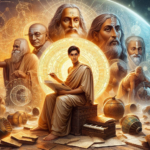The narrative of India’s scientific journey post-independence is a tapestry woven with threads of triumph and tragedy. While the nation has made remarkable strides in space exploration, nuclear technology, and other fields, a shadow hangs over this progress – the unnatural deaths of several prominent scientists. This article delves into the murky waters surrounding these incidents, exploring the motives, potential culprits, and the lingering questions that continue to plague these cases.
Unnatural Deaths and the Cloud of Suspicion
Between the years 1947 and 2010, a series of deaths of Indian scientists under unnatural circumstances raised eyebrows. While the official reports attributed these deaths to suicides, accidents, or natural causes, the lack of conclusive evidence and the sensitive nature of their work fueled speculation. Some of the prominent names include:
- Dr. Homi J. Bhabha (Nuclear Physics): Considered the “father” of the Indian nuclear program, Dr. Bhabha died in a plane crash in 1966. The circumstances surrounding the crash, however, remain shrouded in mystery, with theories of sabotage swirling around the incident.
- Dr. Vikram Sarabhai (Space Science): A visionary leader who laid the groundwork for India’s space program, Dr. Sarabhai passed away in 1971 under unexplained circumstances.
- Dr. Nambi Narayanan (Aerospace Engineering): Falsely accused of espionage in 1994, Dr. Narayanan’s career was marred by controversy.
These are just a few examples, with reports suggesting that as many as 20 scientists may have died under suspicious circumstances. The lack of transparency surrounding these cases has led to accusations of foul play, with fingers pointed towards various actors.
Potential Culprits and Their Motives
The question of who might have been behind these alleged assassinations or manipulations remains open to debate. Several theories have emerged, each with its own set of challenges:
- Foreign Espionage: During the Cold War, India’s burgeoning nuclear and space programs attracted the attention of superpowers who may have sought to stifle its progress. Some believe that these actors, possibly through covert operations, might have targeted key scientists to disrupt India’s scientific advancement.
- Internal Politics & Corporate Espionage: India’s scientific institutions, with their access to sensitive research and technology, could have been infiltrated by rival nations or even domestic competitors seeking to gain an edge. This theory suggests that eliminating key figures could be a way to derail specific projects or steal valuable knowledge.
- Accidents and Natural Causes: While the possibility of accidental deaths or natural causes cannot be entirely ruled out, the frequency and timing of these incidents, particularly within a specific timeframe, raise doubts.
The Difficulty of Finding Answers
Unfortunately, the lack of concrete evidence and the sensitive nature of the cases make it challenging to arrive at definitive conclusions. Many investigations were conducted by internal agencies, with the reports often remaining classified. This lack of transparency fuels speculation and hinders the possibility of uncovering the truth.
The Lingering Impact
The unnatural deaths of these scientists not only represent a personal tragedy but also have a profound impact on India’s scientific progress. The loss of valuable expertise, the chilling effect on future generations of scientists, and the erosion of public trust in institutions are some of the long-lasting consequences.
Looking Forward: Transparency and Continued Investigation
Decades after these events, the need for a thorough and transparent investigation remains paramount. Declassifying reports, conducting independent probes with international oversight, and revisiting closed cases are crucial steps towards uncovering the truth. Only then can India begin to heal from this period of scientific uncertainty and move forward with renewed confidence in its scientific institutions.
Conclusion
The deaths of Indian scientists under unnatural circumstances remain a complex and unresolved issue. While definitive answers may be elusive, the pursuit of truth and transparency is essential. By shedding light on these events, India can honor the memory of its fallen scientists and ensure that such tragedies are not repeated in the future.












